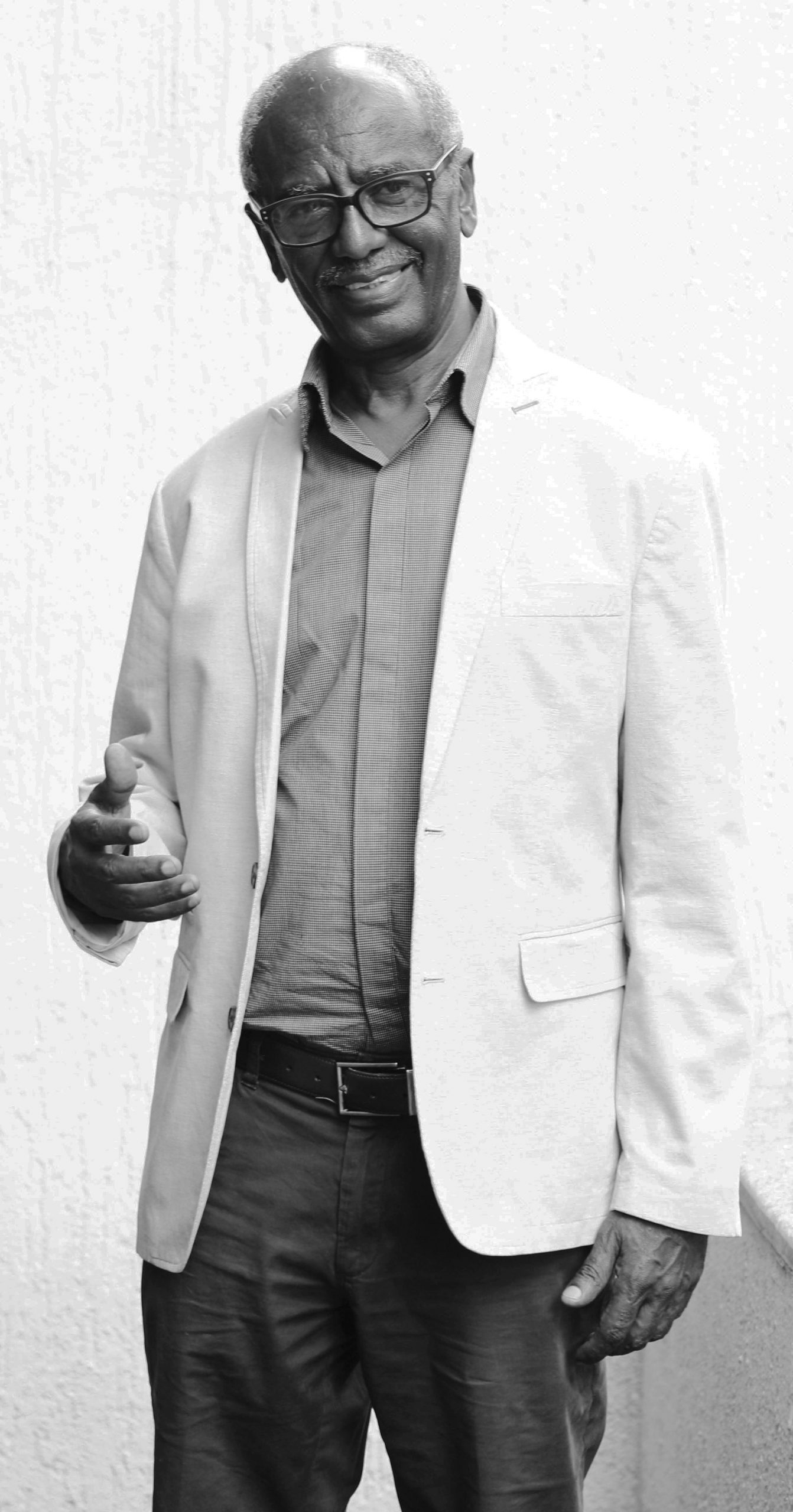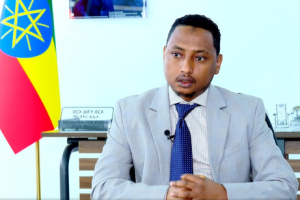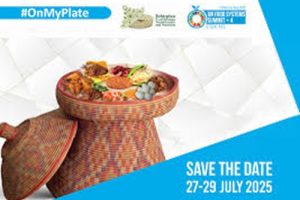
Dr. Araya Asfaw earned his PhD in Physics, Master of Engineering, and BSc in Mechanical Engineering from Howard University, Washington, DC. He worked as a research scientist at various national laboratories in the U.S. before joining the Physics Department of Addis Ababa University in 1996.
Dr. Araya Asefaw has been serving Addis Ababa University (AAU) for the past 24 years as an associate professor of physics. He was also dean from 2008 to 2015 and a Director of the Horn of Africa Regional Environment Center and Network (HoARECN) which was AAU’s program established when he was a Dean of Science. Since then, he was also teaching and advising at the AAU. Recently, The Ethiopian Herald made a short stay with him about his effort to ensure environmental sustainability. Enjoy the reading.
Question: You are concerned more about the environment in particular or natural science in general. Would you please tell us what instigated you to focus on it?
Answer: When I see the impact of the environment on human development and what is happening not only in Ethiopia but also globally, what worries me is the influence it will have on posterity. That is why I dedicated a significant part of my life to better improve, create awareness and also initiate some meaningful program that really makes a difference and also gives personal satisfaction.
Most of your time is spent on the environment and sustainability issues. How do you explain the concept of sustainability?
Sustainability is a broad term so we can look at it from different perspectives. Separately, if an individual wants to improve or lead a better life, he/she has to sustain himself/ herself having a meaningful job, a better life and health. So, somebody can start from individual to family, and move from family to community, from community to nation, and then he/she can scale it up to the global level. But, the concept of sustainability is basically the same.
The sustainability of the environment creates conducive condition for all generations of humans to survive. On the other hand, if we somehow damage the environment either by pollution or by overusing its resources, then we impact the present situation as well as the future. Other than that sustainability can be defined in different contexts.
Do you think that Ethiopia is investing in and working for environmental sustainability?
Relatively speaking compared to other countries, Ethiopia might be in a better condition in terms of giving due emphasis to the issue of sustainability. There are many initiatives that are contributing to environmental sustainability though there are also some challenges. There are many impressive initiatives at local levels and they must be scaled up at the national level. There are still gaps in scaling up best practices.
I think you know very well about activities taking place in the Horn. How do you evaluate the effort of countries in relation to environmental protection so as to ensure sustainability?
When we look at it in the region, there remains a long way to go. First of all, to have a sustainability program, we need to have peace and security and there must be cooperation between different nations in the Horn. But most of the time, countries in the Horn of Africa are facing problems that immediately sense such as war, insecurity, and so on. Unless we address those issues, it would be difficult to talk about sustainability.
One of the reasons that IGAD was actually established was to ensure sustainability and economic development. But unfortunately, the IGAD’s initiative is overshadowed by issues that are coming like prices in terms of refugees, internal displacement, and what is happening in South Sudan and Somalia. In that sense, it hasn’t met its goals. In that sense, we have a long way to go. But I think we should focus on achieving security and some of the crises require a common strategy and more cooperation between countries in the region. So that is why the Horn of Africa is a very fragile region in the world in terms of environmental degradation and insecurity.
The Horn of Africa has been affected recurrently by drought, famine, and other natural phenomena. What are the reasons behind this?
Well, there are two major factors that cause drought and famine in the Horn of Africa. One is a lack of good governance and preparedness to face such issues. The other major issue which is beyond our control is climate change which contributes to frequent drought and famine. Even that could be addressed if you have good governance and a government with strong commitment. They really overcome that problem as well.
You have been serving AAU for the past 24 years. What was your contribution in terms ensuring environmental sustainability be it in the Horn or in the Ethiopian context?
Well, the major achievement over the last 20 years in addressing this issue was the establishment of the Horn of Africa Regional Environment Center and Network (HoARECN). The whole idea was this region as I said is one of the very fragile regions and because of that, we were approached by the Netherlands Government in 2006 and asked us if we could initiate movement or some kind of activity that would really address these challenges the region is facing and then we proposed to establish HoA-RECN.
It is a network of higher learning institutions, civil society and community-based organizations in the region that could work very closely with the government to bring knowledge and also different activities so that somehow we manage to address these challenges.
In these countries, we have major universities and indigenous civil society organizations that are actually working on these issues. So we established this network and through it, we manage to initiate a number of programs at the regional level.
So, most of the program focused on avoiding trans-boundary conflicts between South Sudan and Ethiopia, Kenya, and Djibouti due to resources shared commonly. So, by bringing various players, we try to address some of the common problems in the region.
You also contributed greatly to the establishment of Ethiopia’s Climate Innovation Center. Would you please tell us about that?
The Climate Innovation Center (CIC) was a World Bank project initiative at the global level with the aim of initiating ideas or innovation that will address local issues especially focusing on the private sector. Most of the initiatives in the past were focused on societies and academia. But CIC is targeting especially small and medium enterprises so that they create jobs at the same time bring business ideas and address climate change issues. It could be energy, agriculture, or anything else.
You are also playing your part for sustainability of Rift-Valley Lakes? What is that?
Based on our assessment made in Ethiopia, we identified that the Rift Valley is again a trans-boundary problem. So, the RiftValley was chosen as one of the transboundary problems and we tried to address the challenges in terms of sustainable development. For example, Lake Ziway, a source of freshwater, is endangered due to development, deforestation as well as cutting of forest for agriculture and fuel wood. By and large, the area is heavily affected by human development. What is more, there are a lot of large scale agricultural farms especially floriculture. By then, the floriculture industry had been damaging not only the ecosystem but also polluting the Lake which is supposed to sustain the livelihood of the people.
For this reason, we were trying to balance the development with environment protection. Some of the initiatives that we engaged at Lake Ziway were focused primarily on the floriculture industry that has a bigger footprint in the Lake. As they want this industry to be sustainable, the Netherlands Government is also very much concerned. We then approached an investor and told him about biological means of developing artificial wetland which could be the water treatment progarmme. So, we showed him how to construct artificial wetland and then he treated the water and re-used it.
So, we had a pilot program supported by the Netherlands Government and we managed to construct the wetland in the greenhouse. The investor was very impressed; we told him to use it and scale it up to other greenhouses and he agreed on that. In fact, if you see the water that was treated, there is quite difference when compared to the one that comes from the Lake. Instead of damping into the Lake, the investor reuses the water. By doing this he reduces water consumption of his company by half. So, he scaled the programme to all the green houses.
In fact he wanted the programme to upscale all the horticulture industry and finally the horticulture association and some of the business shared and all of the horticulture industries have now water treatment programmes. This was made possible not by imposition but through discussion and convincing the private sector and they gained economic benefits apart from making the environment eco-friendly. On one hand, they reduce water consumption and avoid potential conflict that could be imminent from lake pollution. As they are getting pollution free fishes, the people in Ziway are also very excited.
And the next step we were trying to do was to work with small holder farmers and telling them to properly use pesticide and consume water in a way that does not harm the water bodies to their own interest.
You also support Addis Ababa City administration to join among resilient cities. Would you please brief our readers about it?
If you look at Addis Ababa, there are a lot of problems associated with deforestation. When I was a dean of science, my colleagues in the department of biology had been trying to establish a botanical garden in the Derg regime but unfortunately they did not materialize. But, it is the most important concept as the botanical garden has many uses in terms of protecting the environment as well.
Hence, when we establish HoARECN, we propose to have a botanical garden in the capital and it could be used for education, recreation, tourism and various activities as well. At the time, the mayor of Addis Dr. Arkebe supported the idea and almost 800 hectares of land dedicated to be developed as a joint venture project between Addis Ababa University and City’s Environmental Protection Authority.
So, the botanical garden idea was to make nature conservation which has two advantages. One is, if you afforest Addis Ababa, you can increase the water holding capacity of the city and the underground water. This is an example of how we could restore the ecosystem by removing the eucalyptus tree which is taking a lot of water and regenerating the indigenous trees like the junipers and many others. If it is possible, we can extend the project to Addis’s chain of mountains such as Entoto, Gulele, Yerer, Wocheca which were covered with forest 50 and 60 years and lost all those forests due to human development.
So, we have quite a number of initiatives from Gullele to Wocheca mountain restoration but they did not go as per the plan. So, Gulelle botanic garden is one that we want to show how by caring for nature, conserving the forest and rehabilitating the degraded land benefits the city. Finally, when they see what has happened in Addis Ababa, everybody is willing to promote the importance of reengineering.
In fact, our partnership with the city is inspired by the Gulele project and the city administration opened up since then to work collaboratively with AAU. Then, we have been approached by the city to work on projects like Qoshe. We were concerned more about the environmental impacts of Qoshe especially to the people living around it and for that reason the City Administration requested us to develop a programme to properly close Qoshe, rehabilitated and we developed methane capturing – a carbon project for them. When Qoshe was closing – what we do in the 40 hectares of land. We agreed to build a park within the city and how do we transfer this damp site into a park. So, all of the work that we did at Qoshe just didn’t materialize.
When we proposed how to transform the Qoshe into a park, the city did not know exactly what we were talking about. So, we decided to journey to New York City to visit the dumpsite served for a long time and converted into a park. So, when we came back Mayor Dirriba was impressed and committed to have 150 small, medium and large parks in Addis Ababa. Later on, all these parks were identified.
All these were inspired by what happened in Gulelle and now I am very excited to see this idea is well received by Prime Minister Abiy. This river basin initiative was also initiated during the time of Mayor Dirriba. When Addis Ababa was accepted as one of the resilient cities, the river basin was one of the programmes supposed to be initiated. Any way with the Addis Ababa city, we have quite a number of programmes that makes me very happy.
Now, you are advising the government, NGOs and private organizations. What do you suggest to further strengthen environmental sustainability in Ethiopia and the horn?
Gambella is a model for other states to ensure sustainable development. As I said, apart from individual initiative, we need to have a government structure for implementing sustainability. There is migration of wildlife from South Sudan to Gambella. It is the second largest migration next to Serengeti which could be also a source of tourist attraction. But we observed there was a lot of investment in relation to agriculture that is actually interfering with wildlife migration.
So, it was not possible to simply protect the wildlife unless we developed a land use plan or master plan that indicated how to use resources properly. So, if you want to implement sustainable development, you need to have a master plan. For this reason, we propose to have an integrated land use plan for Gambella that designates which land should be developed for what purpose. So, if there is no master plan, you cannot simply develop something arbitrarily.
What was missing in Gambella was a master plan. Previously, they were giving land in the left and right without any step. Later on, we agreed to develop a master plan that involved all the ministries. So, we had trans-disciplinary experts that studied exactly the various potential of Gambella – for what purpose the land should be used and how to be protected. So, this master plan development took five years.
Now, when an investor comes to Gambella, (the only State in the country with a master plan) if the State knows exactly what an investor wants, they will tell him where to go. The State now can go ahead with sustained development. If somebody has a long-term investment plan with the absence of a master plan and invested too much money there, what would happen if the authority changes tomorrow? But if there is a master plan, he will be guaranteed and the investment will be successful.
Considering the significance of having a master plan, the federal government ordered every state to follow the footsteps of Gambella state and prepare a master plan based on scientific studies. If this is so, the investment will be granted and the development will be sustainable.
That is why you really need a direction at national level. The rest is easy, once you have a master plan, and then you can also enforce investors to have to follow a sustainable development framework to make sure that they have an environment and social development programme. So that it benefits them and avoids all conflict that could have arisen potentially from the host community and it could avoid any problem associated with the environment and the investment projects will be sustainable. If you want to promote sustainable development, you have to develop this kind of framework.
If an investor wants to get financing for its business from the World Bank or any other institutions, they have to have this framework in place. Then, they can get the money easily, investment will be secured and the community gets benefit from it. This is the way to achieve sustainable development at the whole level.
The Ethiopian herald June 4,2020
BY GIRMACHEW GASHAW





